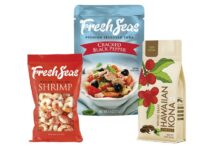It is well to be noted that in the intricate web when it comes to modern healthcare, pharmaceutical packaging goes on to remain unsung; however, it does play a critical role when it comes to preserving the integrity as far as essential medicines are concerned. The sector for long has long turned to plastic for this purpose, drawn due to its reliable qualities that range from sterility and durability to chemical inertness.
But, the world is indeed undergoing a major shift in how it goes on to view plastic. With the growing issues with plastic waste, stringent environmental regulations, as well as evolving public attitudes, the pharmaceutical industry is indeed facing elevated pressure to find sustainable packaging solutions that go ahead and sync with its commitment as far as patient health is concerned.
One such kind of solution that is gaining traction happens to be making use of Post-Consumer as well as Pre-Consumer Regrind- PCR which gives discarded plastics a new purpose by way of repurposing recycled plastics from numerous sources, such as end-users as well as production waste, so as to create innovative packaging. As environmental awareness goes on to take precedence, PCR offers a practical way to decrease the environmental footprint of pharmaceutical packaging sans compromising the basic objective of making sure of patient safety.
Let us delve further into the practical aspects when it comes to PCR materials in pharmaceutical packaging, looking further into their benefits as well as challenges, as well as why a demand-driven, responsible, as well as practical approach is going to be essential in the pursuit when it comes to sustainability. This journey happens to be about finding certain practical ways so as to address the environmental effect of pharmaceutical packaging, thereby making it less wasteful without the sacrifice of the industry’s primary commitment in terms of patient well-being.
What are PCR materials, and how can they go on to benefit the environment?
Pre-consumer regrind or post-industrial recycled- PIR material happens to be manufacturer waste, like off-cuts, trimmings, as well as rejects, that gets repurposed so as to create recycled packaging or even products.
Post-consumer regrind happens to be consumer waste that’s diverted from landfills and thereafter used in the production of plastic packaging as well as products.
The PCR market happens to be driven by rising consumer awareness in terms of environmental issues as well as the growing rise in petroleum prices. This happens to be driving a rise in demand for PCR across the world, with numerous businesses eager to get hold of this innovation.
The advantages of PCR happen to make it even more attractive, in spite of its sustainability perks such as reducing waste, decreasing the carbon footprint when it comes to manufacturing, as well as promoting a circular economy. For instance, PCR goes on to reduce manufacturer costs since fewer and more expensive along with virgin materials happen to be needed in the production process.
There happen to be financial benefits that come along with investment in sustainable packaging since businesses are most likely to relish higher ROIs because of the rising demand as well as lower costs when it comes to manufacturing.
Moreover, manufacturing cost-cutting will go on to drip and benefit healthcare services. For instance, as per the research conducted by the London School of Economics, the cost when it comes to expensive new drugs goes on to threaten the financial sustainability of the NHS by way of spending on branded medicines, rising by more than 5% annually.
This, in sync with earning favor with environmentally concerned customers, will go ahead and benefit a business’ brand, thereby earning a reputation in terms of commitment to building long-term sustainability as well as prioritizing customers’ requirements.
But necessary as well as stringent regulations in pharma go on to mean that virgin plastic can never be ruled out, owing to requirements so as to safeguard patient safety as well as medicine integrity. However, PCR goes on to offer a way for the pharma industry to decrease and address its contribution to the plastics crisis, which apparently the world finds itself in.
As the adoption when it comes to PCR goes on to gain momentum, it is indeed necessary to acknowledge that sustainable practices happen to go beyond raw materials alone. Holistic sustainability strategies have in them innovative design, consumption that’s responsible, and recycling programs.
On the same page, consumers as well as other stakeholders must comprehend the fact that PCR is not just a silver bullet in terms of solving plastic pollution. Complexities, which happen to be unique to the pharma industry, limit the scope.
Considerations, limitations, as well as a responsible approach
The pharmaceutical industry, unfortunately, happens to be among the top global contributors when it comes to pollution and hence finds itself tiptoeing a fragile balance between striving to meet strict health and safety requirements that are set by regulatory bodies and the anticipations of modern consumers who are environmentally concerned.
It is worth noting that while other sectors go on to enjoy freedom when it comes to prioritizing design, aesthetics, as well as sustainability in packaging, the pharmaceutical industry must go ahead and maintain health as well as safety standards on the highest priority.
This goes on to give out an ever-present issue for the pharmaceutical packaging industry. PCR-derived packaging happens to have many limitations, such as compromised quality, inconsistencies in the process, application limitations, and contamination, all of which inhibit its viability as a universally apt packaging solution.
When applied within the pharmaceutical gamut, this potential dearth of purity within PCR goes on to mean the background of the material is either undetermined or traceable. This kind of uncertainty limits the use cases for the product, thereby making it unsuitable for numerous pharmaceutical products like the ones that happen to be injected into the bloodstream.
Though PCR materials happen to be a trending solution to the plastics crisis, pushed by the rising demand for them throughout the packaging industry, supply shortages happen to be a thorn in the side of manufacturers.
The reason for this shortage might as well be attributed to the fact that numerous people happen to be ignorant of how to recycle plastics in the first place, including pharmaceutical packaging. Notably, every week, 1.85 billion plastic packaging pieces are thrown away and not recycled, in the UK.
Not only does this lack of public awareness go on to further contribute to the enormous global plastic crisis, but it also goes ahead and creates a shortage of supply for manufacturers of PCR. Addressing such kind of knowledge gaps by way of comprehensive public awareness campaigns as well as educational initiatives happens to be therefore very important when it comes to bridging the gap between demand as well as supply for PCR.
Moreover, contamination in terms of recyclable plastics renders waste useless as it cannot be used so as to create PCR. Contaminants happen to come in the form of food scraps as well as oils that have not been removed adequately before consumers go on to recycle them. In a modern society that is time-starved and plagued by a culture of convenience as well as instant satisfaction, taking time to wash the packaging waste right before the recycling part is not a priority.
As would be the case with any seemingly ideal solution to an issue, the fact is that due diligence and pragmatism must not be lost. The PCR supply shortage goes on to mean that businesses too happen to be focused on recycling popular materials.
The use of PCR must be governed responsibly by way of taking sustainability into consideration. Firstly, consideration when it comes to the waste hierarchy happens to be essential and thus calls for prioritization of prevention of waste and not having to deal with the waste. The fact of the matter is that sustainability cannot be imposed on the existing designs, but rather, designs require to be reimagined at the earliest stage, at the time of inception incorporating reuse as well as recycling methods like PCR.
So as to achieve this, recycled materials require to be designed at a percentage that’s equivalent to the present market availability as well as capability. This goes on to reduce any risks in terms of responding to rising demand for recycled plastic, only to inadvertently result in more virgin plastic being created so as to fill the shortfalls.
It is well to be noted that there is indeed a compromise to be had. Packaging that happens to be partly recycled, like medicine bottles that are made up of 30% recycled plastic, still positively goes ahead and contributes to the battle against plastic pollution and happens to have its virtues more than 100% recycled packaging product as far as some instances are concerned.
The approach that is responsible for sustainability within packaging is to consider the entire life cycle of the production of all materials so as to be sure that an apples-to-apples comparison takes place, therefore deciding how sustainability can go on to upheld on a project-by-project basis.
Adopting a complete approach so as to create a more sustainable packaging future
The use of PCR within pharmaceutical packaging goes on to offer stakeholders an option to achieve sustainability goals.
Taking an entire approach to sustainability begins with materials being selected based on how much of an impact they happen to have on the environment and how easily they can be reused or recycled within the new products with as little waste as it can be. The point is that this must be factored in from the very start.
The pharma industry happens to have a role to play when it comes to addressing the shortage of PCR as well as supporting a pipeline in terms of future use as well as production of PCR-derived packaging. Pharmaceutical packaging happens to be recyclable in many scenarios, but communication pertaining to where and how to recycle medicine packaging is indeed very limited.
The fact is that raising awareness within this area will go ahead and promote correct recycling in terms of pharmaceutical packaging, thereby bolstering the supply of PCR and thereby promoting the manufacture as well as the use of PCR products throughout the industry.
Stakeholder investment as well as participation within the recycling programs go on to present a further commitment in terms of sustainability, positively elevating consumer sentiment towards the sector.
Finally, the pharmaceutical industry can itself clean up its act by way of following a cyclical design process that factors sustainability into design, lessening material waste and product weight. It also, in turn, reduces the carbon footprint of products, thereby prioritizing efficiency within production as well as continuously taking part in and supporting research and development.
It is worth noting that innovation has gone on to give way to a new age in terms of packaging called bio-based packaging. As a matter of fact, in 2022, the bio-based packaging market happened to be valued at USD 7.92 billion, but it has been predicted that between 2023 and 2032, the market will showcase a CAGR of 12.5%, reaching USD 25.86 billion.
Bio-based packaging products happen to be manufactured with plant-based materials called polylactic acid- PLA, polyhydroxyalkanoates- PHA and molded biodegradable pulp like sugarcane pulp. But on balance, it is indeed imperative so as to realize that bio-based packaging is no silver bullet when we address the packaging pollution crisis of today.
Though bio-based packaging happens to be derived from renewable biomass, like plants, and not fossil raw materials, this does not mean their biodegradability or composability are guaranteed. Unless they are certified as home compostable, bio-based packaging requires very specific elements within the industrial composting plants so as to biodegrade and thereby cannot be composted at home.
The resultant consumer mismanagement pertaining to bio-based packaging waste just serves to create yet another mountain to climb.
Elevating the regulatory collaboration for sustainable packaging
As the pharma industry goes ahead and embarks on the journey to more sustainable packaging solutions by way of the integration of PCR, a crucial aspect that deserves attention happens to be regulatory collaboration.
But, making sure that these new materials go on to comply with strict health and safety standards while at the same time also meeting environmental objectives is indeed a delicate balancing act.
Issues pertaining to the potential risks of making use of PCR for medicinal packaging, like contamination and inconsistencies, must be addressed. Together, industry stakeholders as well as regulators can go ahead and develop protocols as well as quality assurance measures that ensure the reliability and safety of PCR within pharmaceutical packaging.
Pharmaceutical companies will be required to work closely in terms of regulatory bodies so as to establish crystal clear guidelines as well as standards for the usage of PCR in packaging. This collab is pivotal indeed in terms of overcoming hurdles that are associated with the adoption of recycled materials in industries where patient safety happens to be non-negotiable.
Hence, collaboration between regulatory bodies, the pharmaceutical industry, and recycling organizations is indeed crucial so as to establish a much clearer path for the responsible integration of PCR in pharmaceutical packaging. Developing industry-specific protocols as well as standards for PCR usage, testing, and quality assurance could go ahead and also mitigate some of the challenges currently facing the adoption of recycled materials.
By way of forging strong partnerships with regulatory agencies, the pharmaceutical sector can very well streamline the approval process in terms of PCR, decreasing the time and resources needed for testing as well as validation. This not only makes sure to speed up the adoption of sustainable packaging but at the same time also paves the way in terms of a smoother transition towards practices that are environmentally responsible.
In this regard, the pharmaceutical industry can go on to emerge as a beacon in terms of ownership and innovation, thereby setting up benchmarks for other sectors to follow. By way of working hand in hand with regulatory bodies, pharma companies can go ahead and navigate the intricacies of sustainable packaging while at the same time upholding the most prolific standards in terms of patient safety. The result is therefore a win-win scenario, in which the PCR can go on to become a catalyst for change, thereby decreasing plastic waste and minimizing environmental effects while at the same time maintaining vital medicine integrity.
Though there is still a long way to go considering each solution comes with its own set of unique challenges, rising commitment as well as continued investment in sustainability research go on to mean the future of the cleaner pharmaceutical packaging industry is indeed a hopeful one.



























